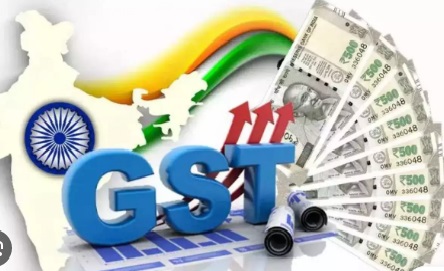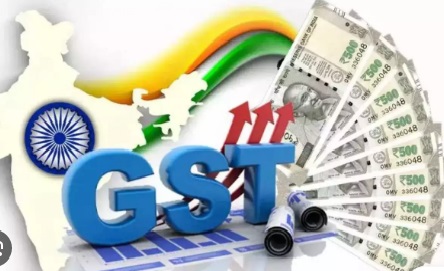GST revenues robust amid stricter audit, 2024 may see tax base widen
One may argue that the current weighted average tax rate under GST is, which is lower than the revenue neutral rate of 15%, has led to lower tax collections, primarily affecting state tax revenues. But a sustained buoyancy in the GST mop-up, coupled with an increasing tax base, and easing compliance costs has nonetheless aided both Centre and states revenue collections, and provided cushion to fiscal slippage – which experts say would continue to some extent in the coming year as well.
A review of GST slabs with simplification as a key objective will likely happen once a new government takes over after the Lok Sabha elections. The recast should however must aim at expanding the tax base and improving tax credit flows, rather than a wholesale hikes in rates that could hit consumption, analysts believe. The list of items exempt from tax may be pruned in the review.
An RBI study in 2022 had said that the weighted average GST rate fell from 14.4% at the time of inception to 11.6% in 2019 as a consequence of a series of tax cuts between November 2017 and December 2018. For perspective, the Arvind Subramanian Committee report had estimated the revenue neutral rate at 15-15.5%.
In the first eight months of the current fiscal year, gross GST collections have recorded a growth of 12% year-on-year, with a monthly average mop-up of Rs 1.66 trillion. In FY23, the monthly average collections were Rs 1.50 trillion, and in FY22, they were Rs 1.24 trillion.
Among the components of gross collections – Central GST (CGST) collections have recorded a sharp 16.7% jump in collections in April-November FY24, and State GST (SGST) collections have witnessed a 15.4% rise.
IGST collections, however, have shown a softer increase at 8.6% as it comprises collections from import of goods, which has grown meagrely at 2.6% year-on-year. Collections from cess have recorded a 12.9% rise in April-November.
Even though collections from cess constitute a part of the gross GST mop-up and are shown as revenue receipts in the Consolidated Fund of India. It’s levied only to serve the purpose of compensating the states for loss of revenue arising due to the implementation of the GST regime.
Initially, it was supposed to be levied till June 2022, but the Centre extended the levy till March 2026. This is because during the pandemic, collections from compensation cess were not sufficient for payment of compensation to states. Thus, in order to fill the gap, the Centre borrowed about Rs 2.7 trillion in FY21 and FY22. The revenue collections from compensation cess from July 2022 till March 2026 would be utilised in repayment of borrowings.
However, even if the cess collections are removed from the total GST mop-up, the growth rate in collections is similar to that of gross GST collections. Meaning, compensation cess’ removal would not likely alter the GST mop-up’s growth trajectory.
The insipid collections from import of goods is a direct consequence of contraction in merchandise imports. In April-November, merchandise imports declined 8.7% year-on-year. Experts have attributed the buoyancy on tax collections primarily to economic growth and increase in compliance.
“GST collections have grown significantly from Rs 80,000 crore – Rs 1.2 trillion in the initial years of the regime to an average monthly collection of Rs 1.7 trillion in the current year – as a result of increase in domestic consumption, government initiatives towards improving tax compliance and plugging tax leakages, e-invoicing requirements, and increase in purchasing power,” one of the expert said.
In a post on ‘X’ last week, the finance ministry had said that the total number of GST returns filings have risen 56% to 11.28 million between April 2018 and April 2023, on account of improvement in compliance by taxpayers, driven by “effective policy” and “systemic changes” in GST.
The number of active GST taxpayers rose 33% to 13.96 million during the same period.
Earlier this month, Minister of State for Finance Pankaj Chaudhary said that over the years, the measures taken by government for improving tax compliance include mandating e-way bill-ITC matching, mandating e-invoice, deployment of AI and ML-based analytics, aadhaar authentication for registration, calibrated action on non-filers, and integration of e-way bill with fast tag among others.
Moreover, the current year has seen an increase in audits on various industries, one as a strategy on the part of the government, and on account of the deadline to issue demand notices for the period of 2017-18 and 2018-19. “The increase in audits and scrutiny have resulted in increased compliance leading to increase in GST payments,” noted another expert said.
“Also, there has been a stringent crackdown on GST evaders especially where fake invoicing is concerned. This too has added to collections,” he said.
Till October in the current fiscal, The Directorate General of GST Intelligence (DGGI) has detected Rs 1.36 trillion as overall GST evasion, including fake input tax credit (ITC). Of which, a recovery of Rs 14,108 crore has been made. The authorities are using system based analytical tools and system generated red flag reports to take action against tax evaders.
In the coming year, GST collections pace would be affected by fall in the nominal GDP growth, which is expected to slow down amidst external uncertainties and tepid domestic demand conditions, mostly rural. However, the impact may not be proportional as the growth in GST collections witnessed so far this year outpaces the 10.5% growth in nominal GDP assumed in the Budget.
“A growth of 10-12% seems sustainable given that increase in compliance management and audits are bound to continue next year,” he said. “The increase in certain rates like online gaming will also impact the continued growth in collections,” he added.
“Another factor which can impact the GST collections is the GST rate rationalisation, which, for a while, is under consideration of the Group of Ministers formed by the GST Council,” said another expert said.





